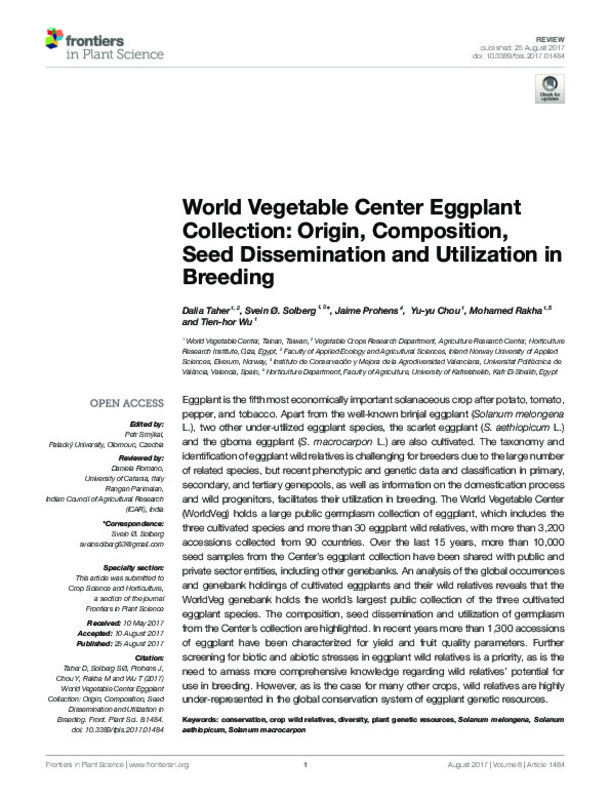JavaScript is disabled for your browser. Some features of this site may not work without it.
Buscar en RiuNet
Listar
Mi cuenta
Estadísticas
Ayuda RiuNet
Admin. UPV
World Vegetable Center eggplant collection: origin, composition, seed dissemination and utilization in breeding
Mostrar el registro completo del ítem
Taher, D.; Solberg, S.; Prohens Tomás, J.; Chou, Y.; Rakha, M.; Wu, T. (2017). World Vegetable Center eggplant collection: origin, composition, seed dissemination and utilization in breeding. Frontiers in Plant Science. 8. https://doi.org/10.3389/fpls.2017.01484
Por favor, use este identificador para citar o enlazar este ítem: http://hdl.handle.net/10251/102498
Ficheros en el ítem
Metadatos del ítem
| Título: | World Vegetable Center eggplant collection: origin, composition, seed dissemination and utilization in breeding | |
| Autor: | Taher, D. Solberg, S. Chou, Yu-Yu Rakha, M. Wu, T. | |
| Entidad UPV: |
|
|
| Fecha difusión: |
|
|
| Resumen: |
[EN] Eggplant is the fifth most economically important solanaceous crop after potato, tomato, pepper, and tobacco. Apart from the well-known brinjal eggplant (Solanum melongena L.), two other under-utilized eggplant species, ...[+]
|
|
| Palabras clave: |
|
|
| Derechos de uso: | Reconocimiento (by) | |
| Fuente: |
|
|
| DOI: |
|
|
| Editorial: |
|
|
| Versión del editor: | http://doi.org/10.3389/fpls.2017.01484 | |
| Agradecimientos: |
Funding for the World Vegetable Center’s general research activities is provided by core donors: Republic of China (Taiwan), UK aid, United States Agency for International Development (USAID), Australian Centre for ...[+]
|
|
| Tipo: |
|









